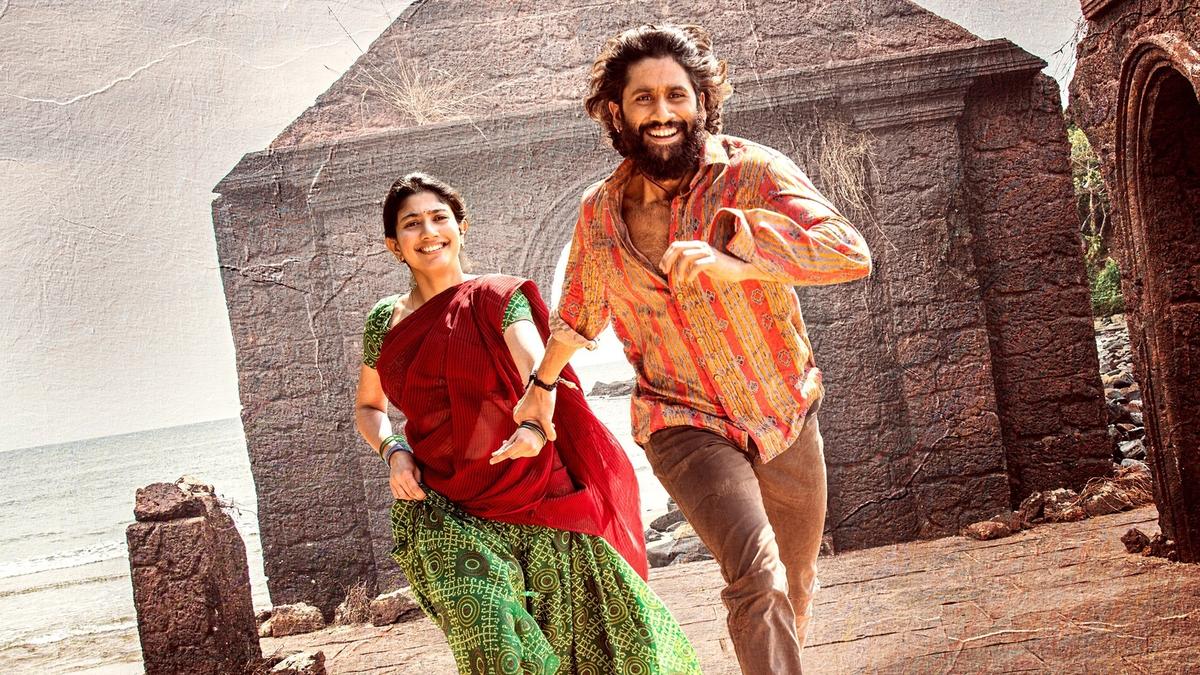
‘Thandel’ movie review: Sai Pallavi, Naga Chaitanya elevate a partly-choppy romance saga
The Hindu
Thandel, a Telugu film by Chandoo Mondeti, tells a love story with compelling performances by Sai Pallavi and Naga Chaitanya
Some films focus less on plot and more on character-driven narratives. Thandel, the Telugu film directed by Chandoo Mondeti, is a prime example. Based on true incidents from a few years ago, in which fishermen from Andhra Pradesh unknowingly crossed international waters into Pakistan, the film weaves a love story that transcends all odds. The storyline, penned by Karthik Theeda, is straightforward, but Chandoo’s screenplay immerses viewers in the world of the fisherfolk, with an emotionally stirring romance — between Raju (Naga Chaitanya) and Satya (Sai Pallavi) — at its core. The poignant love story comes alive through the lead actors’ performances, complemented by Devi Sri Prasad’s evocative music, which serves as the film’s emotional anchor. But is that enough to overlook the weaker, more turbulent portions? Almost.
The film wastes no time in establishing Raju and Satya’s romance. Through the opening title cards and initial sequences, we are introduced to a couple deeply in love. The story unfolds from Satya’s perspective, and for a fleeting moment, I was reminded of Sai Pallavi’s character in Amaran, where, as Indu Rebecca Varghese, she anxiously awaits the arrival of Major Mukund Varadarajan. In Amaran, she awaits his brief visits home from the border; in Thandel, Satya marks the months, weeks, and days until Raju returns from the high seas. However, the similarities end there — their characters, environments, and arcs take entirely different paths.
Thandel takes its time, allowing the love story to unfold in all its shades — the joy, the conflicts, the anxieties, and the heartache. It is fitting that the first words Raju utters are ‘bujji thalli’, an endearment that, as the film progresses, proves to be far from empty sentiment. The lighthouse and the flag become silent witnesses to their love and longing. The men work off the Gujarat coast for nine months at a stretch, while the women wait in quiet hope. Though little seems to happen in the first hour, the romance keeps viewers engaged, and the film gradually weaves in the economic struggles of the families and the deep bond within the fishing community.
The chartbuster song-and-dance sequences — ‘Bujji Thalli’, ‘Hilesso’, and ‘Siva Shakti’ — enhance the film’s charm. Reuniting after Love Story, Chaitanya and Sai Pallavi share a natural on-screen chemistry that makes their romance feel authentic. Chaitanya also makes an earnest attempt to match Pallavi’s flawless dance moves, holding his own alongside her captivating screen presence.
When the film shifts away from the romance, it navigates choppy waters. The sequences set on the high seas are undermined by unconvincing visual effects, making it difficult to stay immersed in the narrative. Additionally, the film’s persistent effort to elevate Raju to a larger-than-life heroic figure — justifying his role as a thandel (anchor or leader of the group) — feels more like a cinematic construct than a natural progression of events.
The film takes several creative liberties in its portrayal of events inside the Pakistani prison, heightening the drama for emotional impact. While it is unclear how much of this is based on actual incidents, these portions lean heavily on mainstream film tropes, lacking the authenticity that makes the Srikakulam sequences feel so rooted. Similarly, the pre-climax segment feels more like a contrived setup than an organic, nail-biting conclusion.
What keeps the film grounded during its more unsteady moments are the performances of Naga Chaitanya, Sai Pallavi, and the women of the village who spend months waiting for their loved ones, highlighting their quiet resilience and inner strength. The subplot involving a bridegroom (Karunakaran) is also sensitively written, adding depth to the narrative.

The Opposition Aam Aadmi Party (AAP) on Tuesday asked the Bharatiya Janata Party (BJP) whether it would fulfil the poll promise of providing free LPG cylinders to women on Holi. Hitting back, the ruling party asked AAP why had it not kept its word on disbursing ₹1,000 to women for which it had allocated ₹2,000 crore in the 2024-25 budget. Meanwhile, Delhi government sources said officials are preparing a blueprint of the proposal and that the criteria for the beneficiaries is yet to be decided. The BJP had promised to provide LPG cylinders for ₹500 to women from poor families and one free cylinder each on Holi and Deepavali ahead of the February 5 Assembly election.












